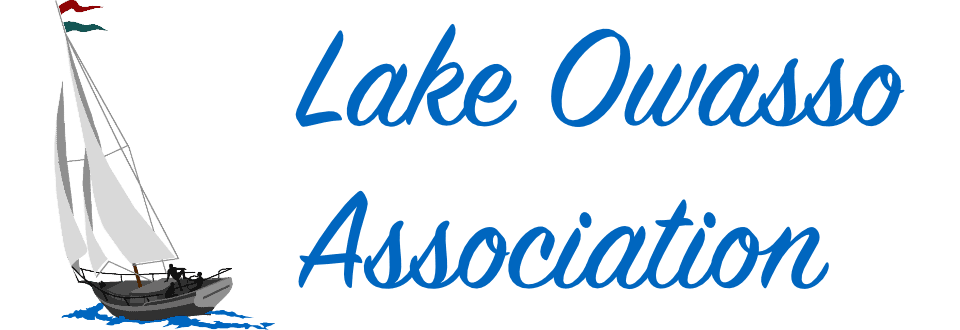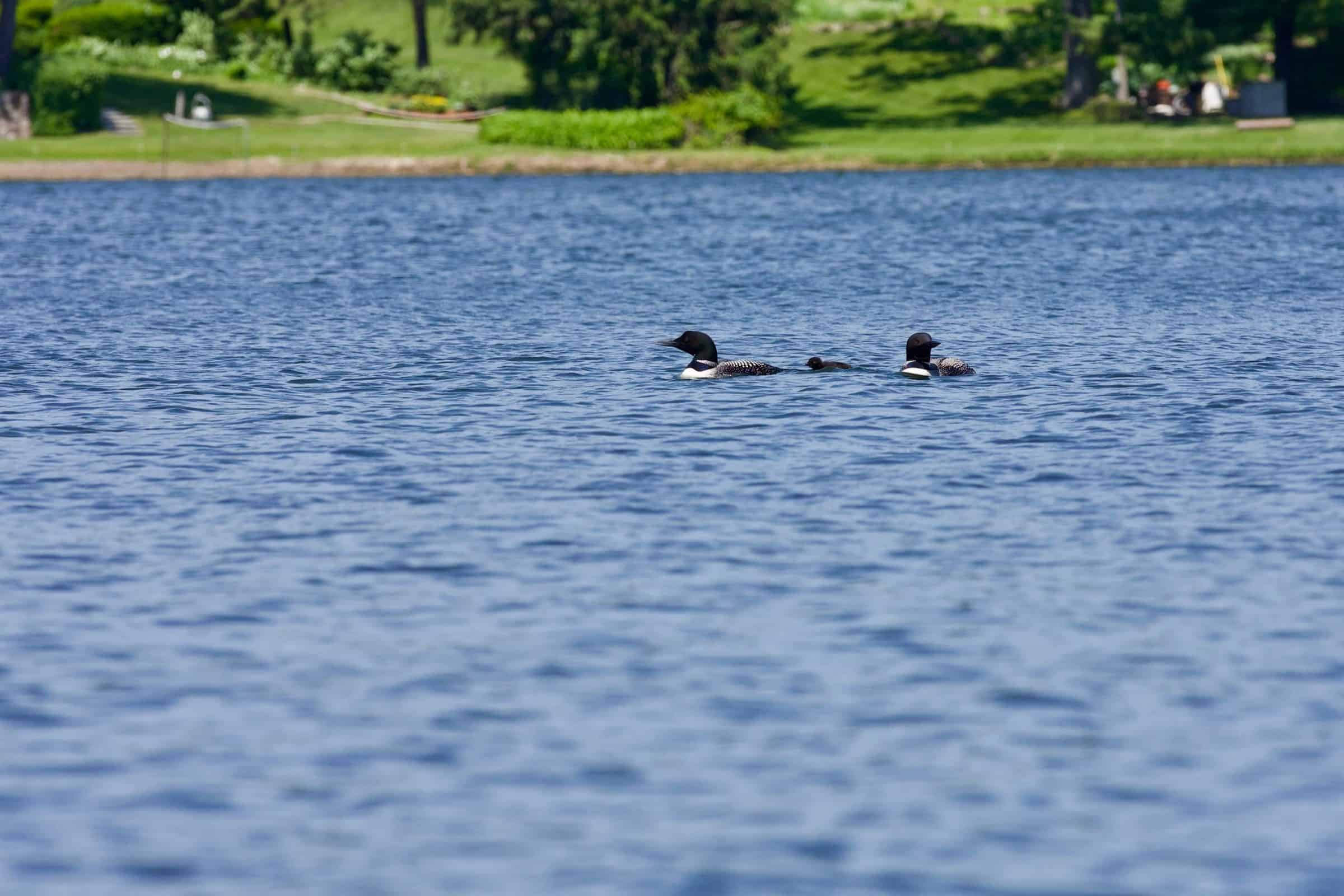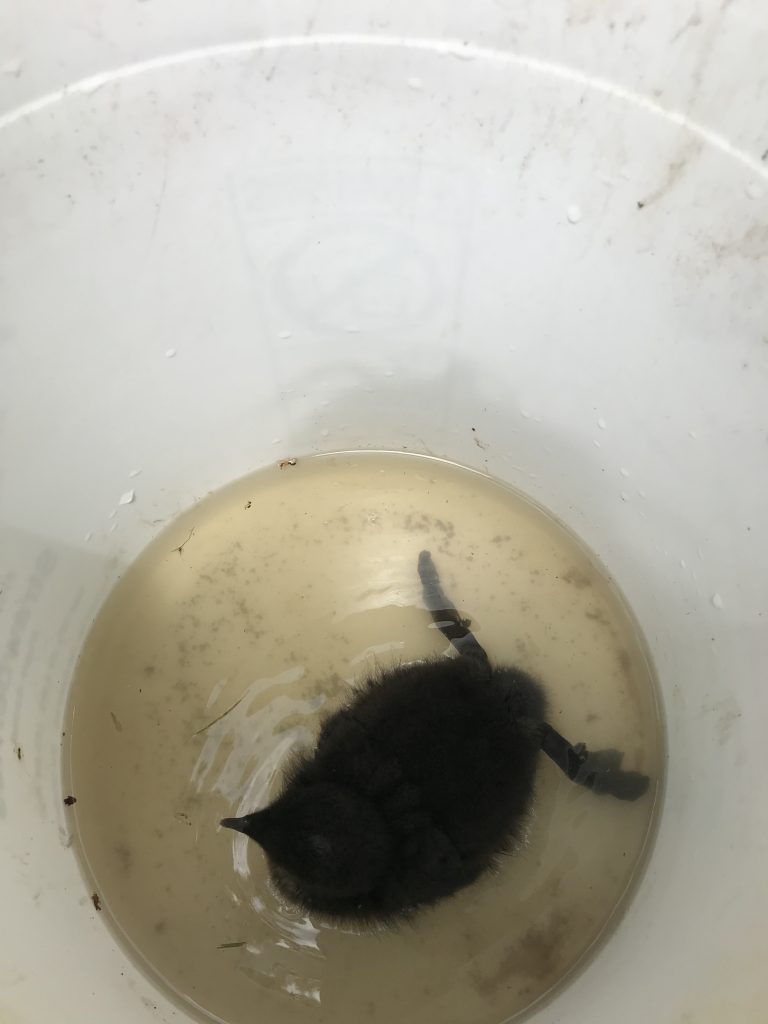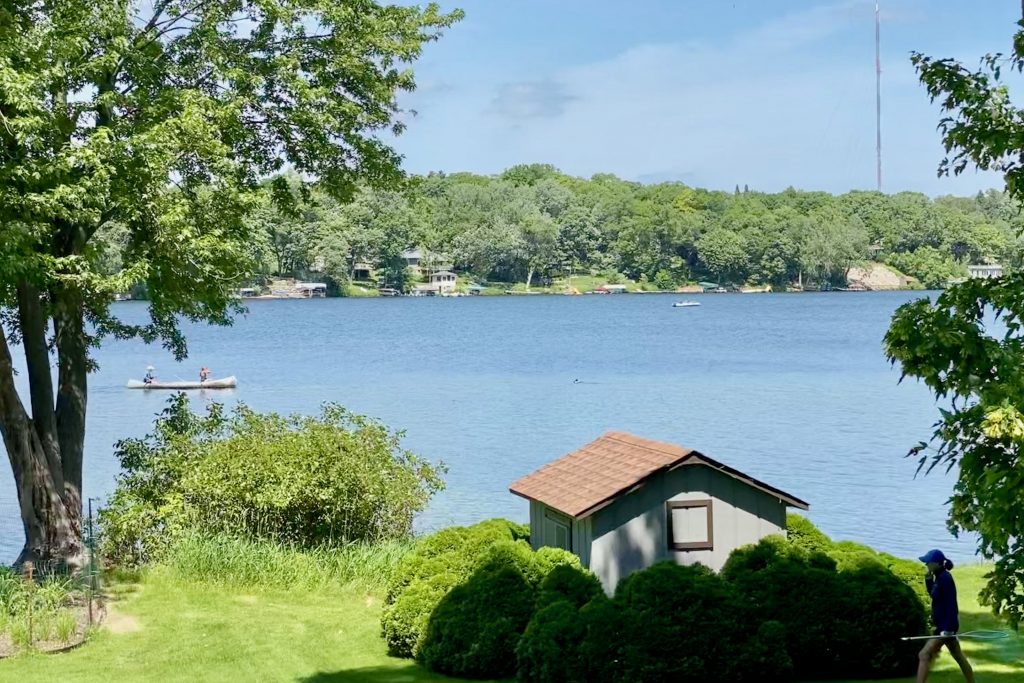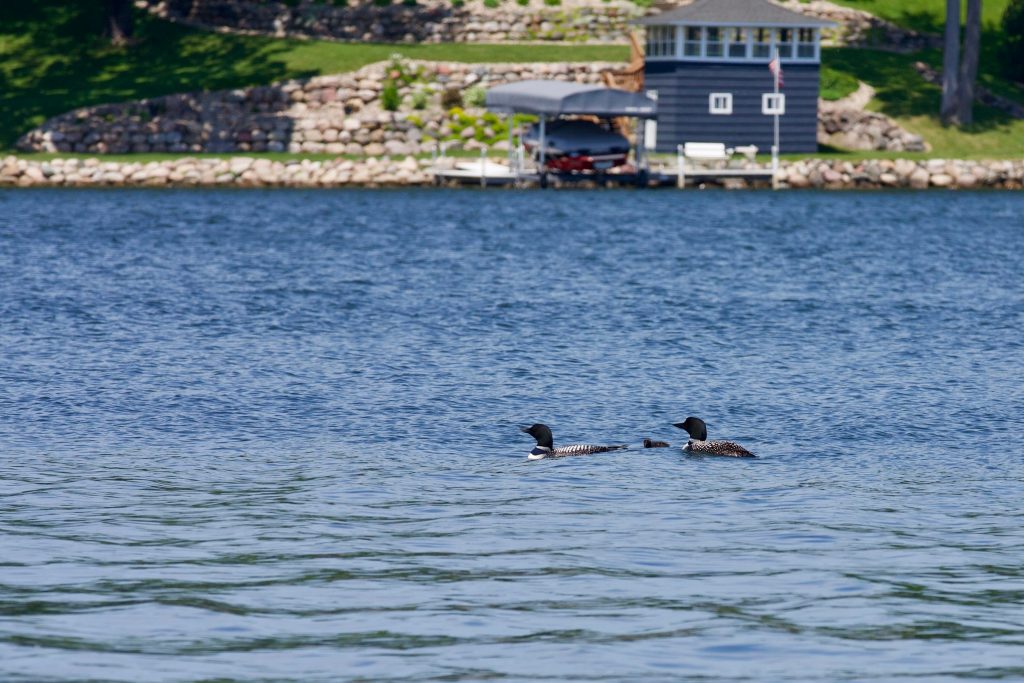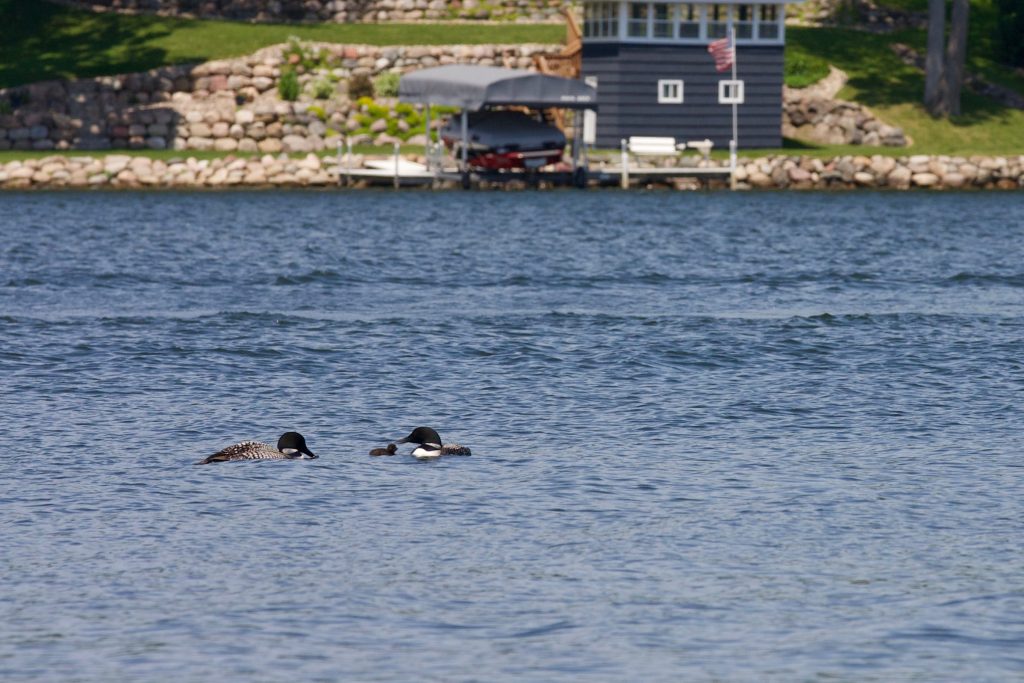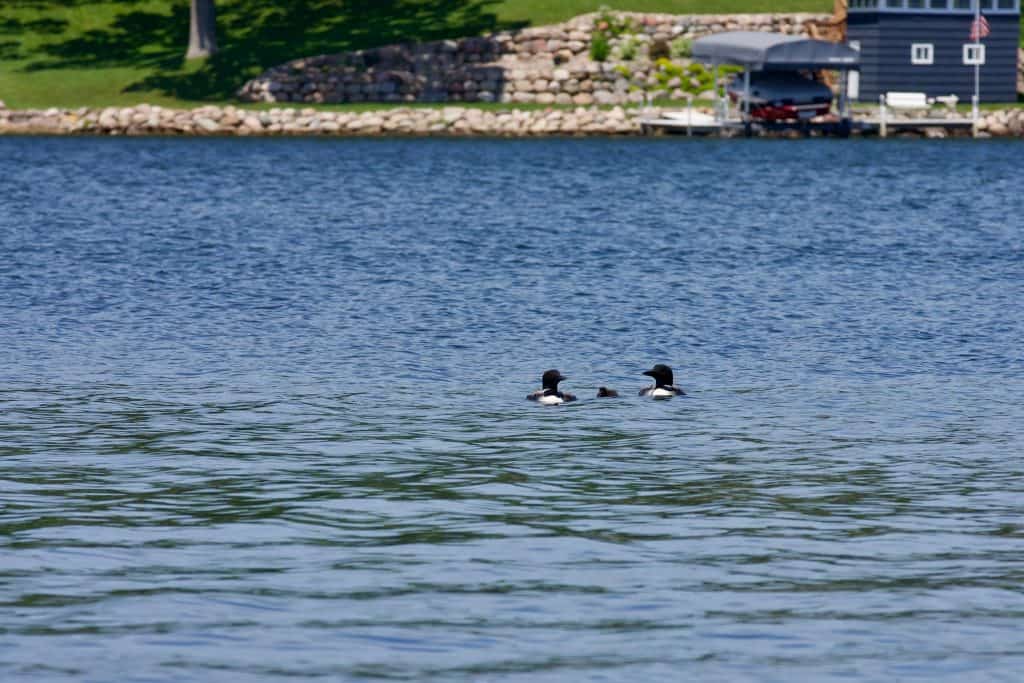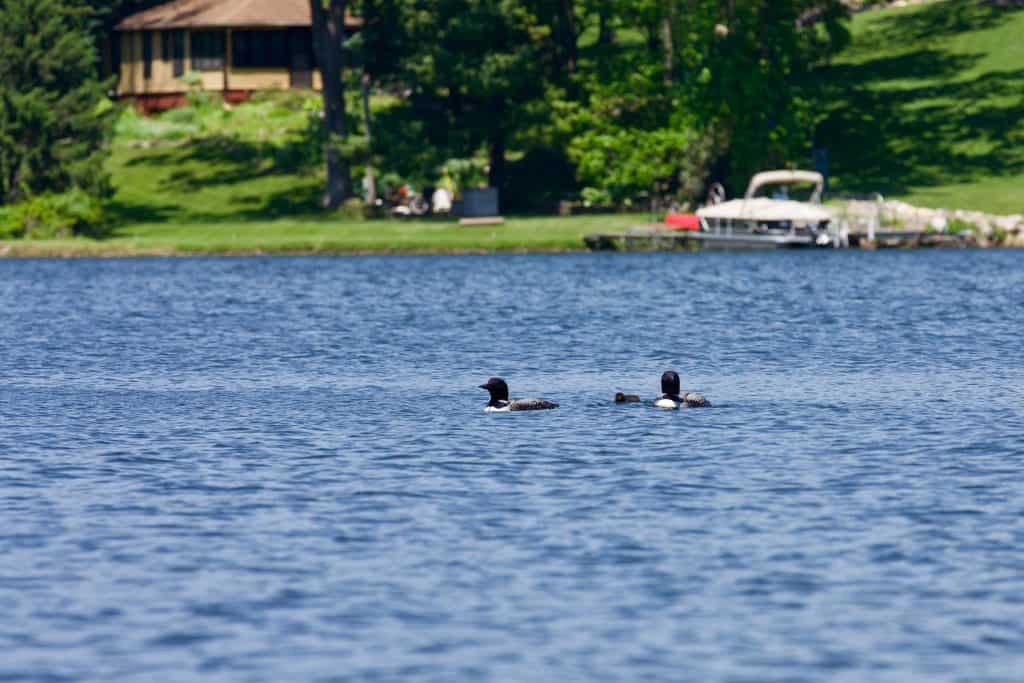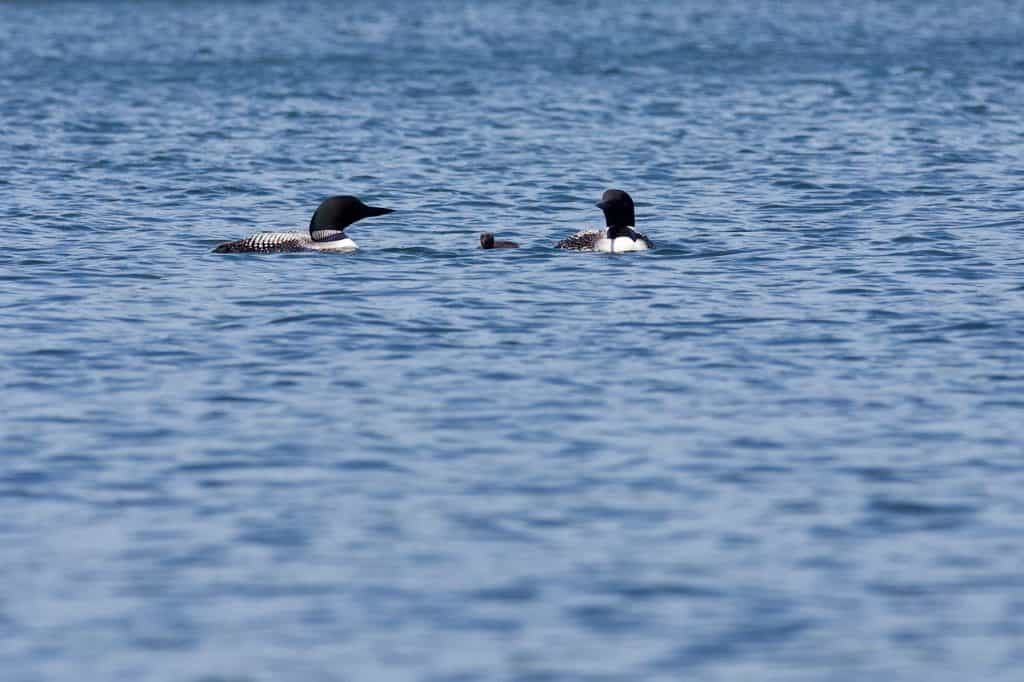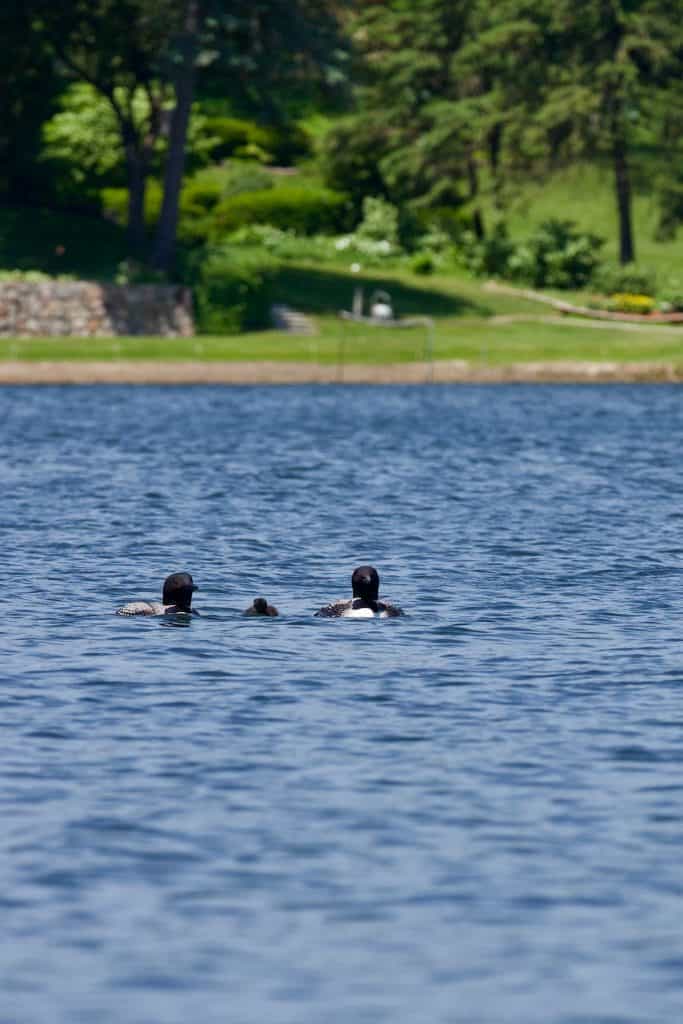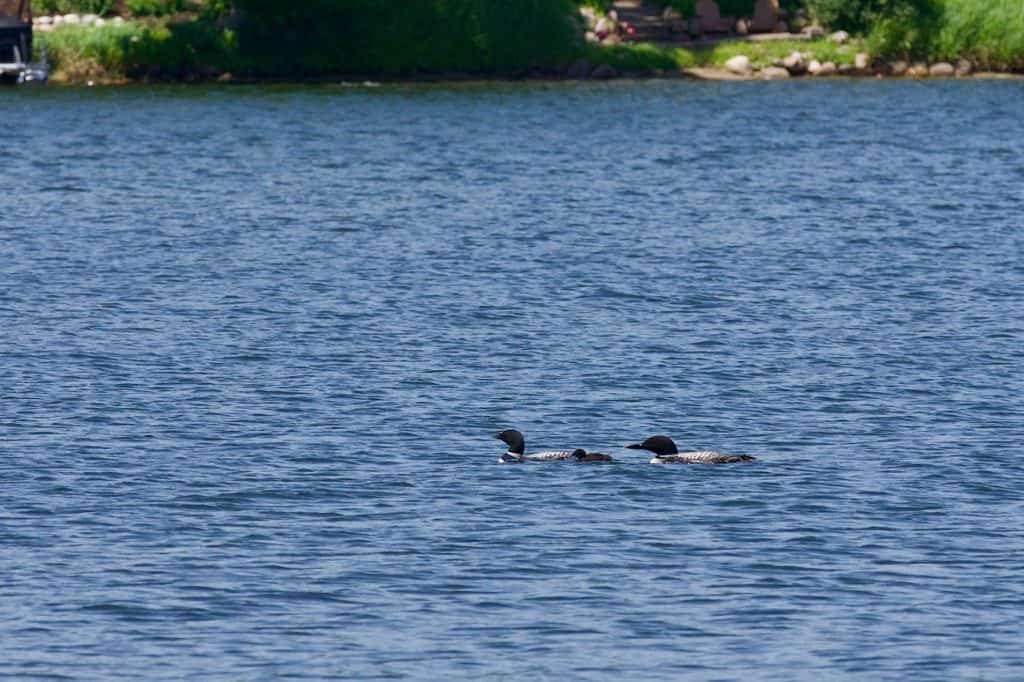A baby loon was born to a loon pair on Lake Owasso–it was first spotted on Wednesday, June 10th, 2020. On Saturday, June 13th the baby became separated from its parents due to high winds and large waves on the North side of the lake. The baby washed up on shore and was rescued by Horshoe Drive resident Danna W. Attempts at reuniting the baby on Saturday failed and so Danna brought the baby to the Wildlife Rehabilitation Center of Minnesota (WRCMN) on Dale St. The baby was fed fish mush and kept warm in captivity.
Meanwhile on Lake Owasso the search continued for the baby loons parents. WRCMN said reuniting the baby with its parents would be its best chance for survival. On Sunday morning the pair was spotted near Sandy Hook Dr in one of the few calm spots on the lake during another windy day. With the help of Kristi and Steve Y., the baby was retrieved from WRCMN and delivered by canoe to its parents. WRCMN warned that if returned to the wrong parents there’s a chance the baby could even be attacked so everyone was a bit nervous. To top things off right as the baby was released a bald eagle swooped down extremely close–thankfully his target was a fish, not baby loon!
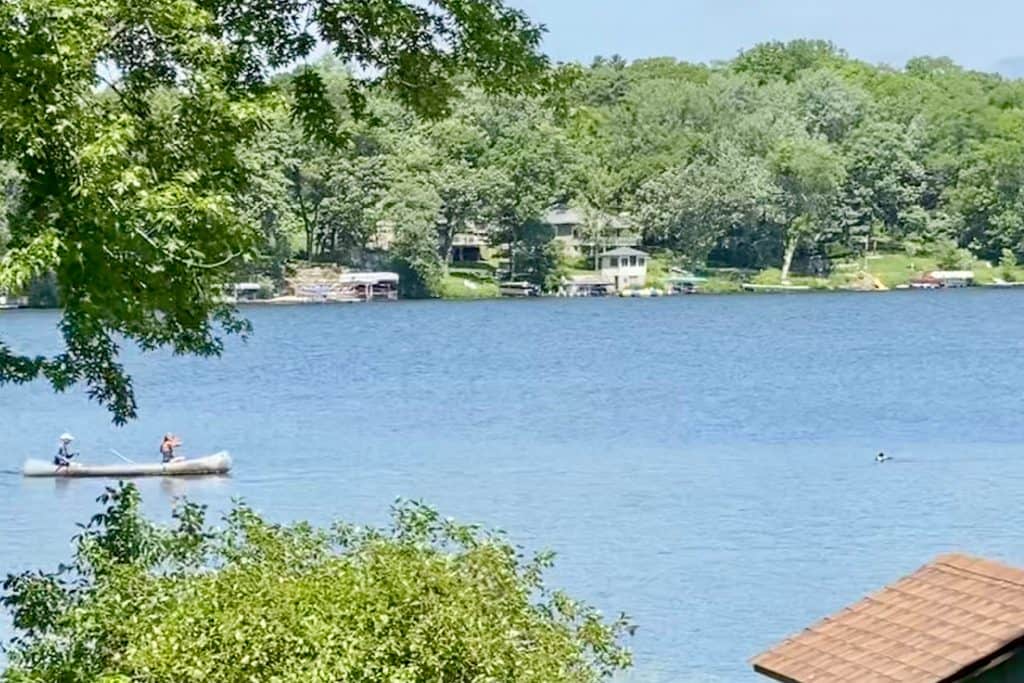
To everyone’s joy the parents quickly recognized the baby and swam circles around it almost as if expressing joy and gratitude themselves. The family remained in the calm water near Sandy Hook most of Sunday morning allowing Andy W. to capture the photos below (click on thumbnails to view slideshow).
UPDATE 6/16/2020: Most unfortunately, our baby loon did not survive. She was last seen alive Monday morning near the Sandy Hook easement. By Monday afternoon the parents were exhibiting odd behavior–calling out during the day and swimming up and down the South shore giving attention to one spot near the easement. At 3pm we discovered the young loon washed up on shore deceased. We were all heartbroken. Baby loons are so fragile and we had really hoped for a better outcome especially given the successful reunion last weekend. WRCMN offered to do a necropsy on the chick and so after the parents left we brought the chick in. They found several interesting things, but nothing that is a cut and dry “This is why it died.” Most likely it was the culmination of a number of things. Here’s what they had to say:
We found signs of head trauma that were not present at original admit. Did it hit something? Did the parents shoo it away because of the other internal issues we found and possibly cause the head trauma? Hard to say, but this was a new development. Internally, we found the start of a bone infection as well as a stomach ulcer. These issues could have been somehow apparent to the adults, but would not have shown in our exams or likely even in lab work.
These complicating issues, combined with the stress from the past couple days and the head trauma were probably all it took for this fragile chick to die.
Loons typically have two chicks a season, so they may have lost another chick to similar internal issues – it’s so hard to say.
Our hearts break for the rescuers who put so much time, energy and hope into the reunion. We are going to leave this post up with our original goal: Hoping that this little chick’s life story will help save other loons this summer.
RIP little chick, we’re so glad you were with your family.
So, what can you do to help?
It’s boating season and while that means a lot of fun for us, it’s a nightmare for aquatic wildlife like waterfowl and reptiles.
Young loons like this cannot dive. Too much activity around them can separate them from their parents.
When there are waves it’s nearly impossible to see these little loons in the water. To protect our beautiful state bird, please give loons a very wide berth. You should assume they have one or two chicks nearby – even if you don’t see them.
If you see people harassing loons, get the boat registration number (snap a quick photo) and immediately report it to the DNR conservation officer for your area.
Observe no wake zones and if loons are crossing a channel in front of you, stop and allow them to cross. Hopefully other boaters will also stop.
If you find a loon chick or a swan cygnet that has become separated from its parents, leave it be if it’s in a safe area and uninjured. If time goes by and the parents don’t find it, safely contain it in a covered container and then that evening seek out the parents. Lower the bird into the water facing the parents and stay completely still. Once they begin swimming toward each other slowly back away.
In both species, choosing the wrong family can result in the young bird being killed so don’t make a random guess. Pay attention to the loon and swan families on your lake now to learn their territories and the number of babies. That knowledge could help you reunite the family down the road.
Read more on WRCMN’s Facebook Post.
Resources to learn more about the Common Loon
- Here’s What to Do If You See a Baby Loon By Itself This Summer – Bring Me the News MN
- Loon Preservation Committee
- National Loon Center
- MN DNR
